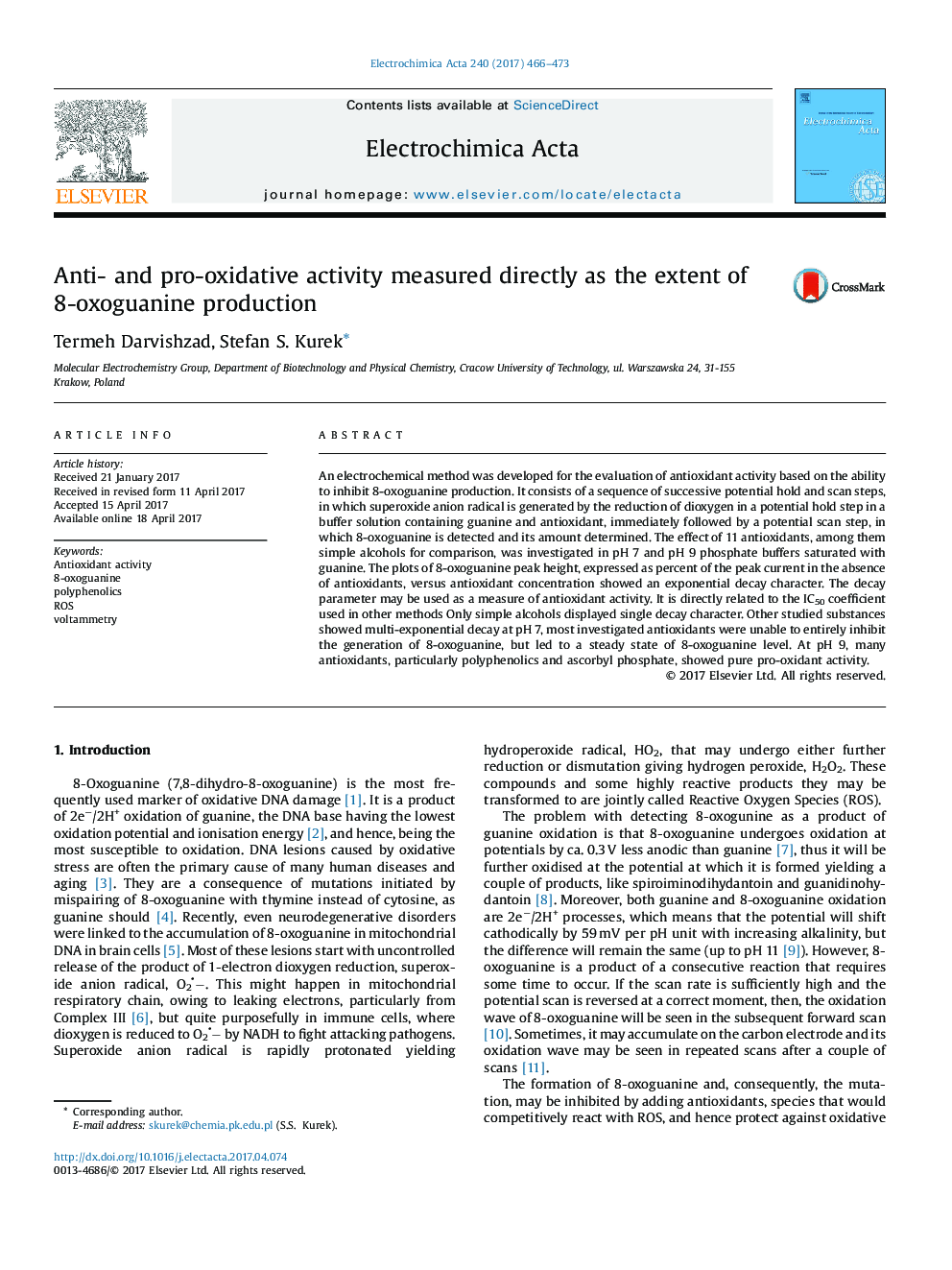| Article ID | Journal | Published Year | Pages | File Type |
|---|---|---|---|---|
| 6471333 | Electrochimica Acta | 2017 | 8 Pages |
An electrochemical method was developed for the evaluation of antioxidant activity based on the ability to inhibit 8âoxoguanine production. It consists of a sequence of successive potential hold and scan steps, in which superoxide anion radical is generated by the reduction of dioxygen in a potential hold step in a buffer solution containing guanine and antioxidant, immediately followed by a potential scan step, in which 8-oxoguanine is detected and its amount determined. The effect of 11 antioxidants, among them simple alcohols for comparison, was investigated in pH 7 and pH 9 phosphate buffers saturated with guanine. The plots of 8-oxoguanine peak height, expressed as percent of the peak current in the absence of antioxidants, versus antioxidant concentration showed an exponential decay character. The decay parameter may be used as a measure of antioxidant activity. It is directly related to the IC50 coefficient used in other methods Only simple alcohols displayed single decay character. Other studied substances showed multi-exponential decay at pH 7, most investigated antioxidants were unable to entirely inhibit the generation of 8-oxoguanine, but led to a steady state of 8-oxoguanine level. At pH 9, many antioxidants, particularly polyphenolics and ascorbyl phosphate, showed pure pro-oxidant activity.
Graphical abstractDownload high-res image (88KB)Download full-size image
